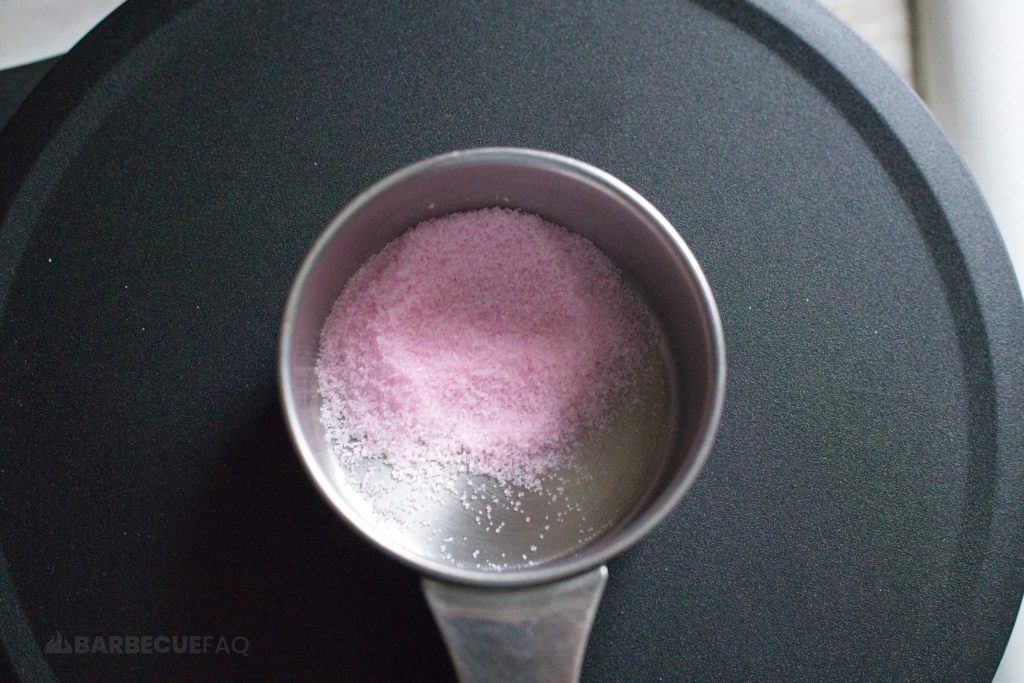I stored a batch of my Beef jerky in 6 ways over the course of 7 days.
These were the shortlist of findings:
| Storage Method | Comments |
|---|---|
| Ziplock Bag | Jerky tasted the closest to the day I made it. Most convenient option. Bags are cheap. |
| Vacuum Sealed w/no Vacuum | Same taste but not super convenient. Vacuum plastic is expensive. |
| Vacuum Sealed | Exterior of jerky is changed – in a bad way for my preferences. |
| Mason Jar | Tastes similar. Looks cool for a gift. Convenient for storage, not for travel. |
| Tupperware | Tasted the worst – almost stale – likely due to my Tupperware being too big. |
1. Storing Jerky in Ziplock Freezer Bags
Note: I am specifically referring to “freezer” bags and not storage bags.
Most people have these in their house, they’re cheap, and they’re convenient to take with you or for storage.
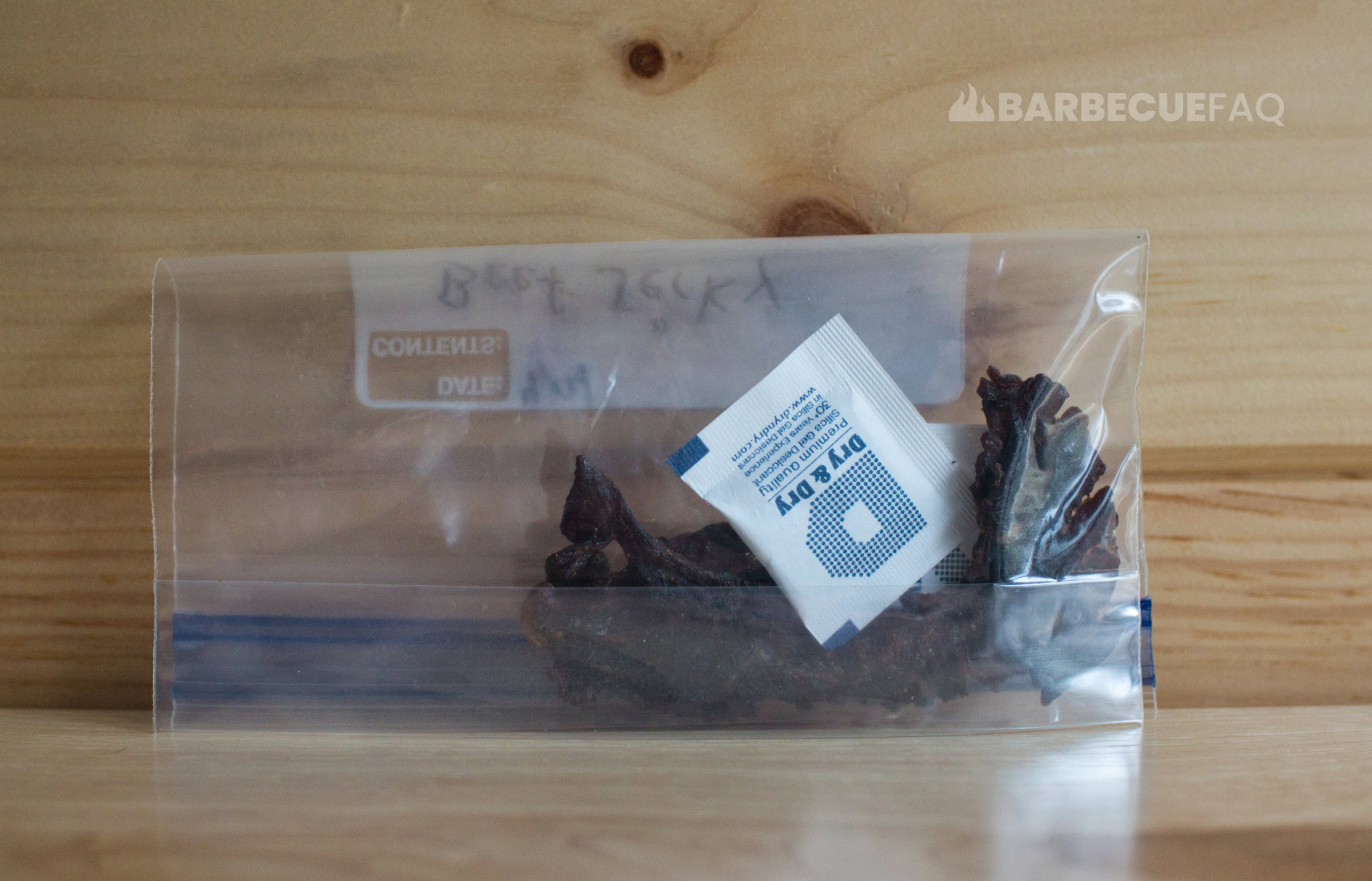
After 7 days, there’s no signs of spoilage, off-odors, or taste taint.
The jerky was roughly the same texture and consistency as the day I made it.
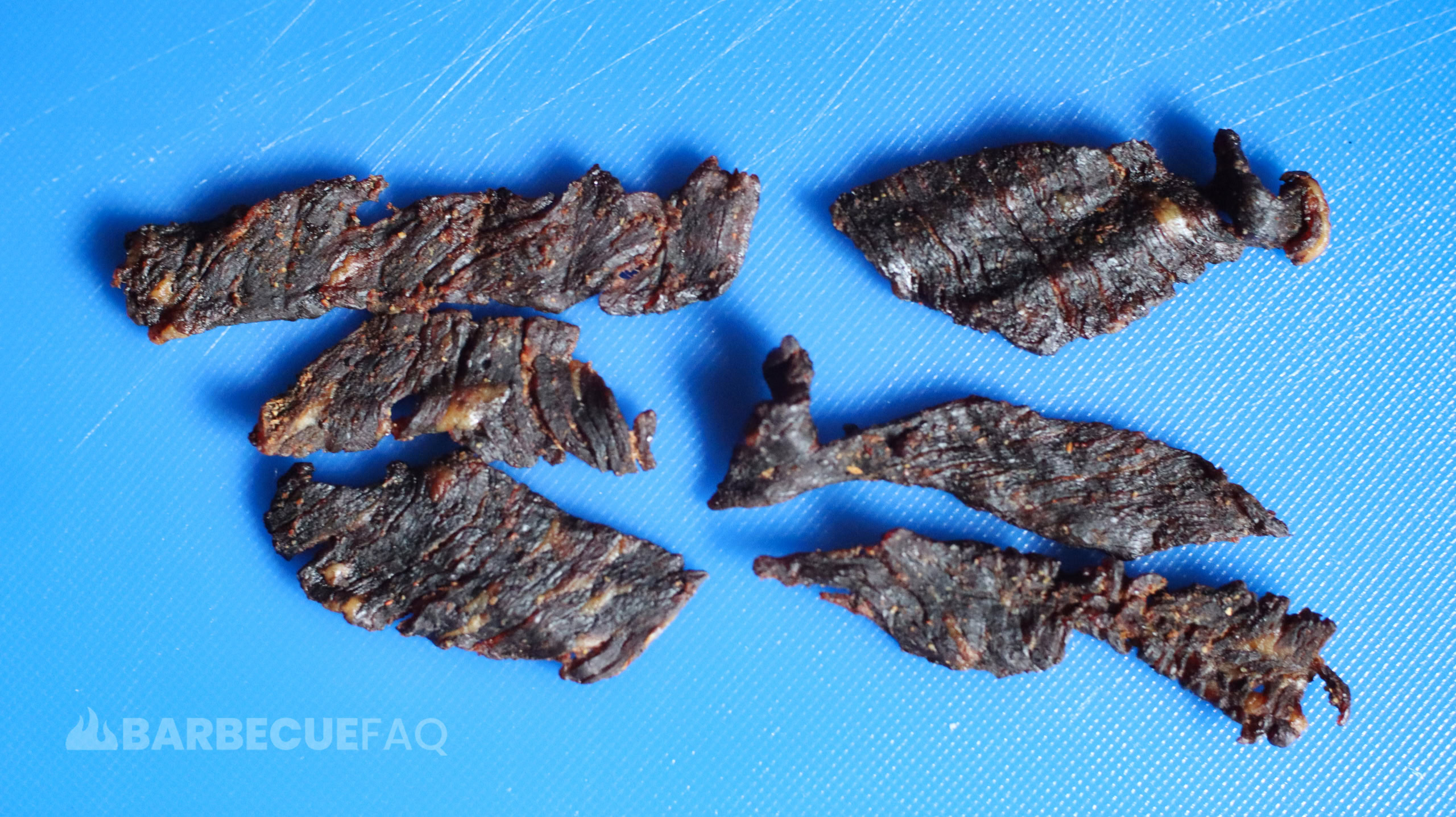
2. Sealed Vacuum Bags (with no Vacuum)
The only time I ever do this is for when I have no ziplock bags and I made a small batch of jerky that will be eaten in one sitting
In this case, the plastic is even thicker, they’re sealed, and the moisture absorber buffers the moisture in the packaging.
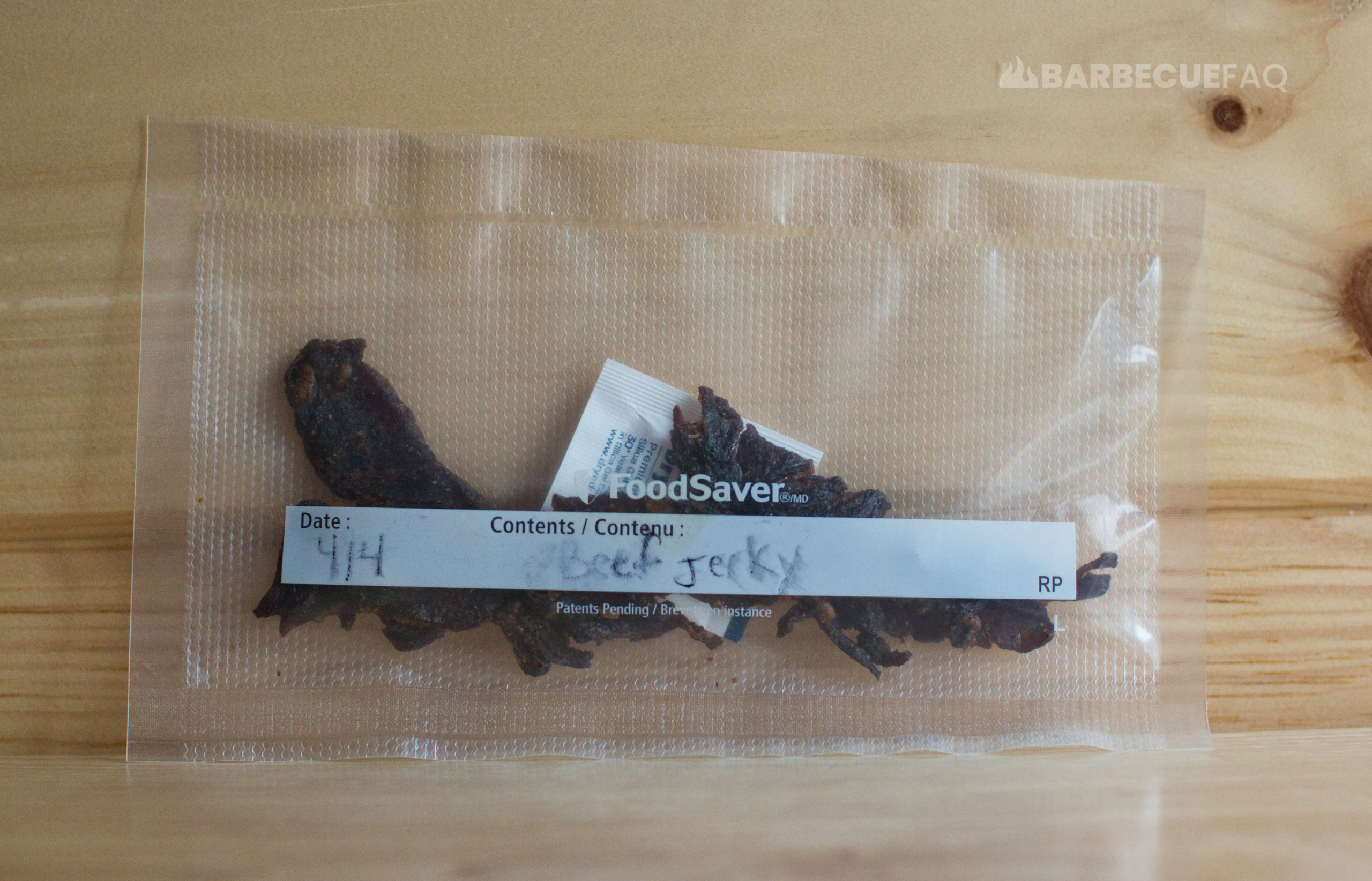
After 7 days there were no signs of spoilage, off-odors, or taste taint.
The jerky tasted the same in terms of texture and consistency/flavor as the ziplock bags.
The only reason this option stinks is because the bag isn’t resealable.
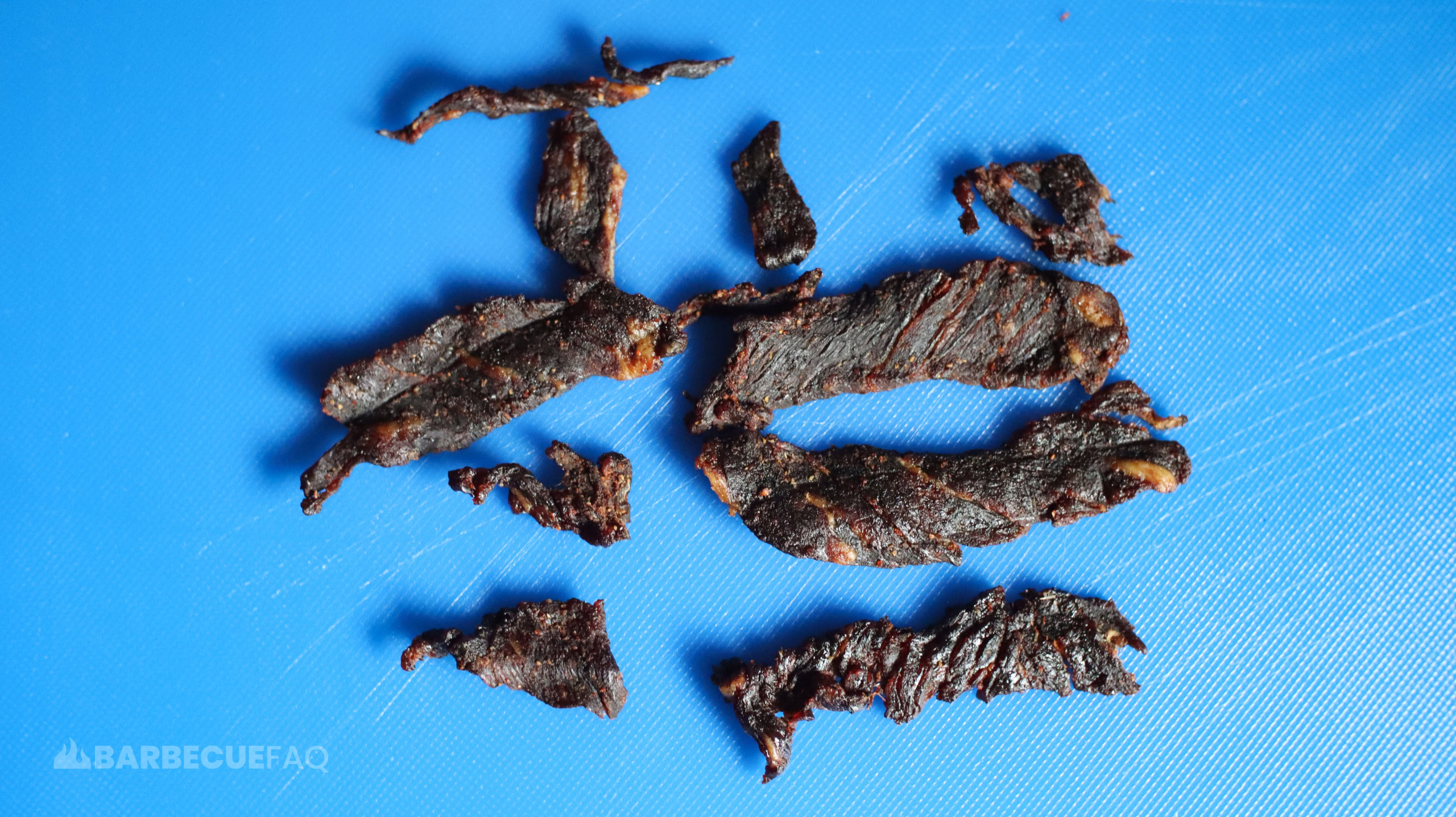
3. Small Mason Jar
Mason jars I don’t really use for jerky – I use them for sauces and pickled things.

After 7 days there were no signs of spoilage, off-odors, or taste taint; The jerky tasted similar to the day I made it.
While I’m not sure I’d reach for a mason jar to store my jerky – especially If I have freezer bags – they definitely can make great gifts or for keeping in the pantry.
They stink for portability though – imagine that in a hiking pack? No thanks.
4. Vacuum Sealing the Jerky?
You might of never noticed this but not a lot of jerky is sold vacuum sealed.
This is because it affects the exterior of the meat.

The vacuum will quite literally pull moisture out of the meat.
Here’s the meat after 7 days:
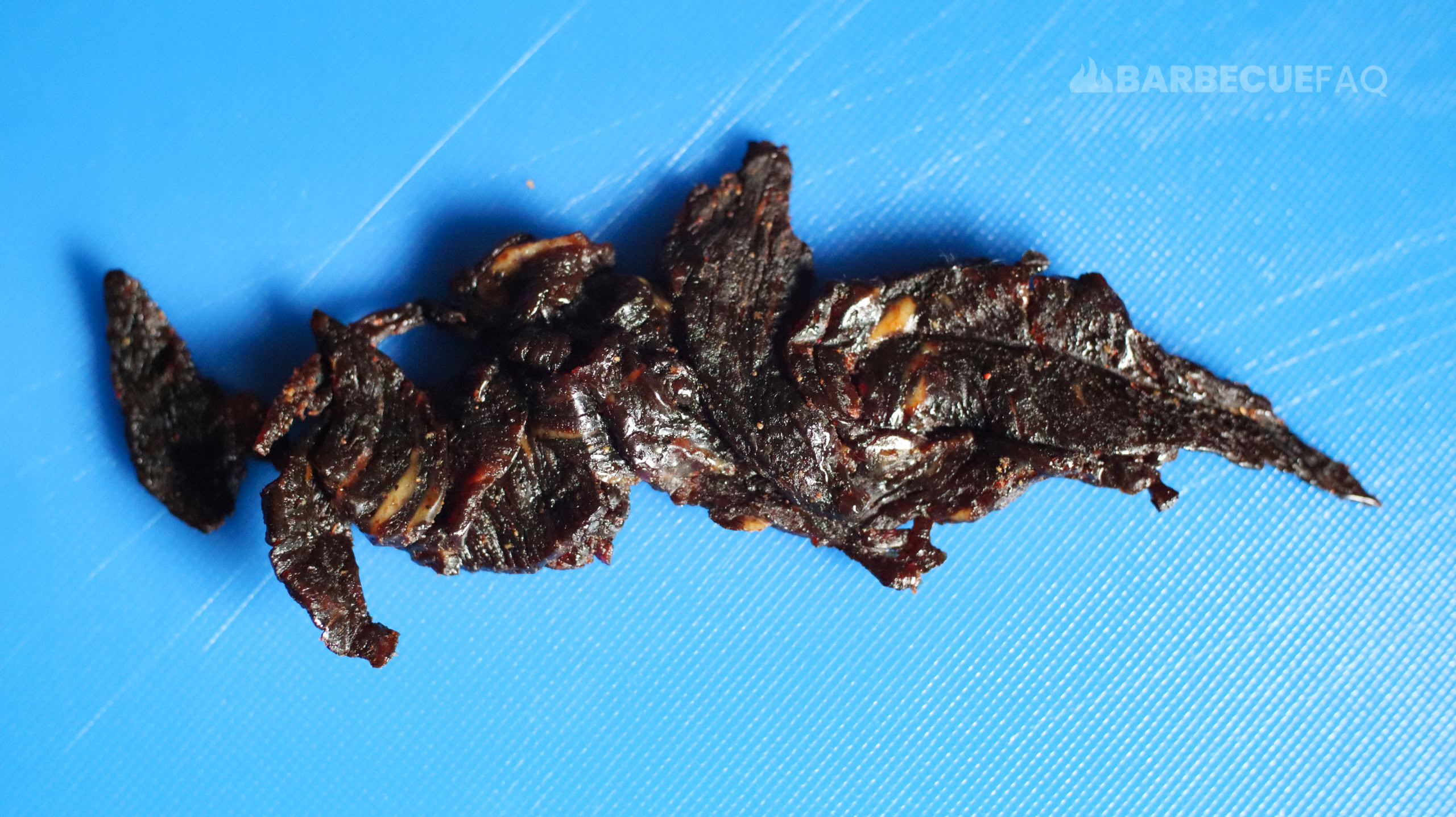
If your goal is long term storage (6+ months), vacuum sealing is your best option.
BUT the jerky tends to feel wet/waxy, especially as it’s allowed to aerate.
There were still no signs of spoilage, off-odors, or taste taint.
5. Tupperware Containers Stink
Tupperware containers would likely be my last option – mainly because it’s just not practical in my house.
Even the container used for this article, I had to rifle through my cabinets to find one.

This was the worst tasting.
The jerky seemed to lack flavor and was objectively dryer than the other options – I’d even call it stale.
Note: It also didn’t help that I used a Tupperware container that was far bigger than necessary.
There’s clearly ample headspace within the container.
What About Using Silica Gel Bags for Moisture?
All the jerky above I added a silica gel packet to.
But if you intend to eat the jerky in a few days, they’re not necessary.
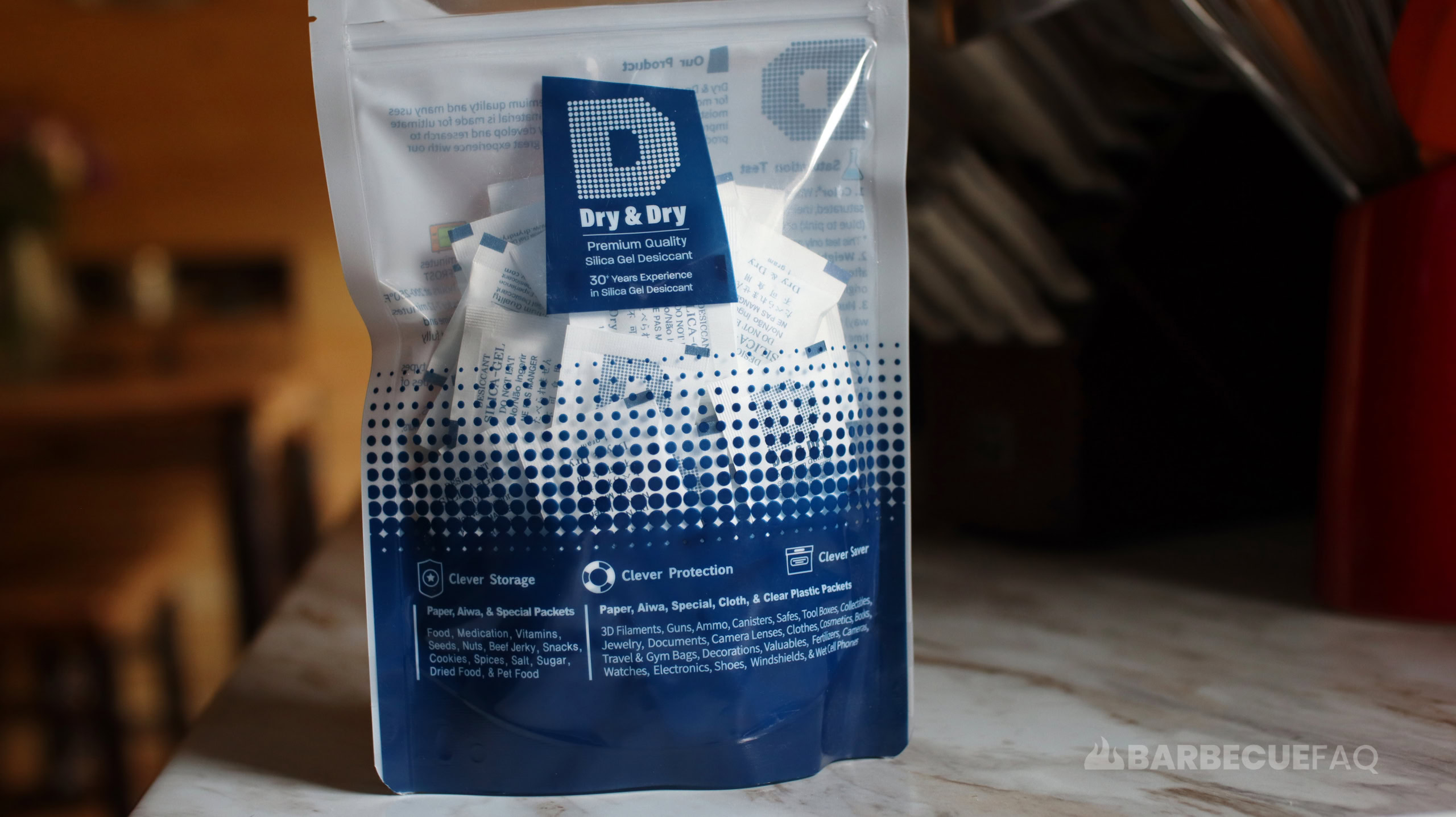
These bags are contain a chemical or substance called a “desiccant” which controls the moisture in the container by absorbing it.
These small packets are very affordable and help to add more shelf-life to your jerky.
The ones I use are Dry & Dry, 1 Gram, which covers 120 cubic inch volume containers.

A quart sized Ziploc bag is 3.5 x 7.69 x 5 inches or 134 cubic inches.
Meaning, I typically put 2 of these into a freezer bag.
Dry & Dry also note: “We recommend placing more packets than recommended for extra protection.”
Dylan, Why Not an Oxygen Absorber?
You could very well use an Oxygen absorber – most store-bought beef jerky is sold with one.
BUT if your goal is short term storage of around a couple weeks in an air tight container, adding a food-grade silica gel packet is more than enough.
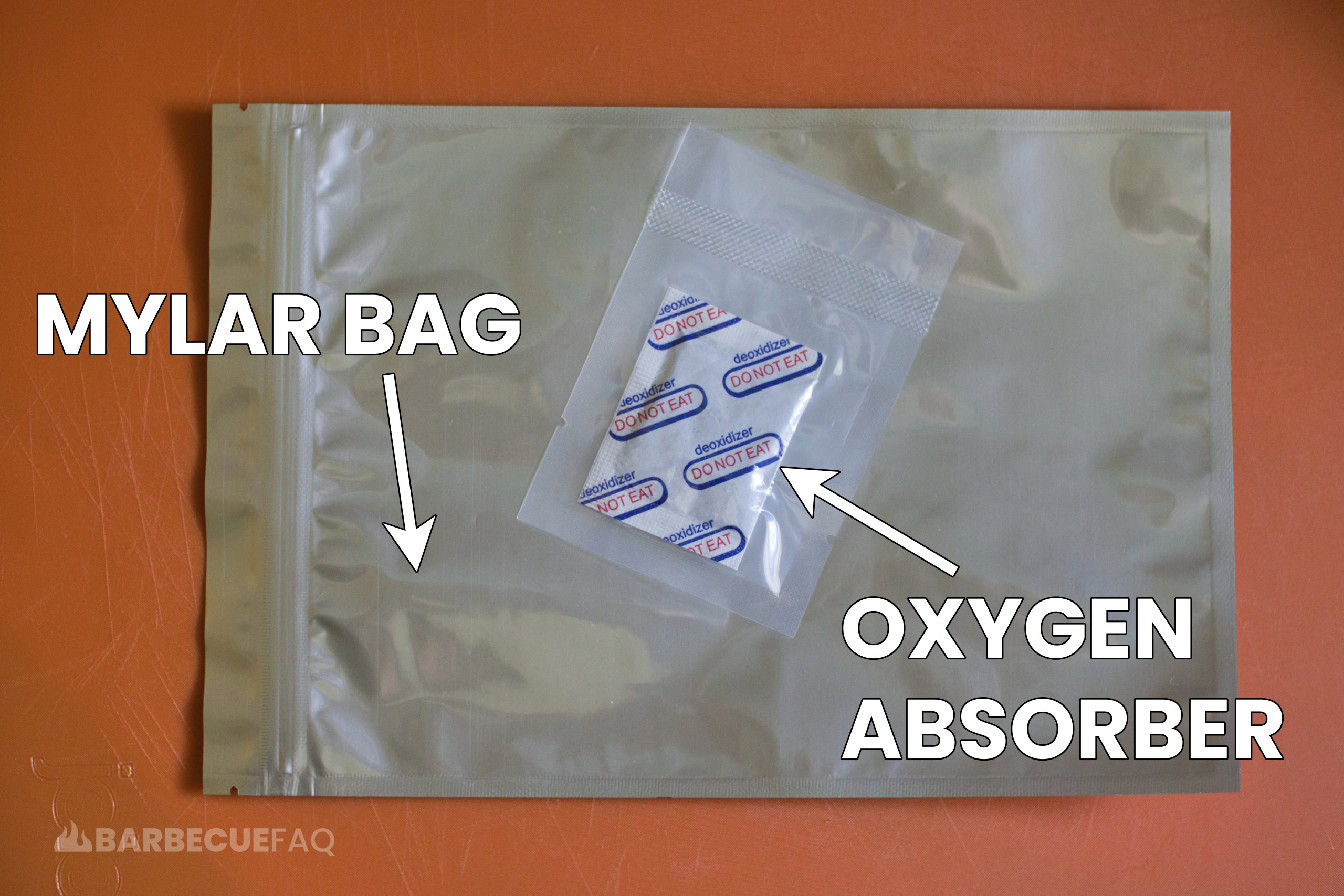
If your goal it to store homemade jerky for a long period of time – like a year – use a vacuum sealer and an oxygen absorber.
Just remember, once you open the package, you nullify the oxygen absorber.




